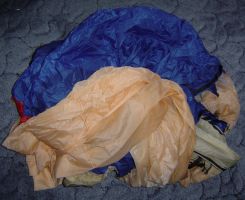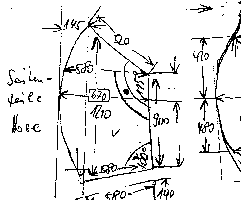Legs - Flight Experiences
The staffless kite receives its form by the air back-up, which develops, if air flows in by the front entry slots and only by the rear outlets can escape from little air. The legs receive lift on the one hand, like every other kite also, by the pressing power on the kite lower surface, but on the other hand also by the curved top side in the rear aerea, which is formed like an airfoil of an airplane. The long legs work like a tail and provide for additional stability.

The Legs rather flat fly and bend in particular with gusty wind to tumbling. The wind range is appropriate for trims of the balance between 2,5 and 5 Beaufort and can downward through still to 2 Beaufort be expanded. The kite "hangs" then however more in air than which it flies. Upward the wind pressure becomes nevertheless very strongly and permits a handling only to this value.

Best the legs flew so far at the beach during wind direction landinward. In the inland are more gusts to be expected and he flies there more jerkily. In particular soil eddies often prevent a coming up of the entry slots. The underground should be also soft or smooth. The kite could fall on the soil and straighten up with again refurbishing wind again and sharpen over the soil back and forth. Beach soil with fine sand or a lawn is for this the most suitable underground.